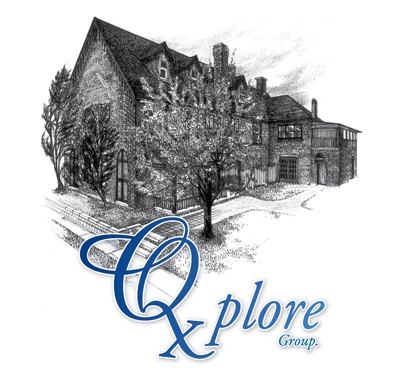
Organizational Development,
Management and Human Resources Services
OPERATIONS MANAGEMENT
nother necessary aspect of Human Resource Management is the day-to-day administration; maintaining employee records, tracking time, paying employees, administering benefit packages, writing policies, tracking attendance, new hire orientations etc. As HR trends support the movement away from administration to more of a strategic role we can help in this regard.
The daily aspects of your responsibilities can be time-consuming, but with technology and outsourcing can offer some benefits and cost savings. Qxplore Inc. can help with the following areas:
HUMAN RESOURCE LEGISLATION AND POLICY DEVELOPMENT
![]()
ost businesses (90%) and their employees are governed by Provincial and in some cases Federal legislation. Understanding, and complying with, the ever-changing legislation that governs companies and their employees is vital to sound HR management.
Whether your organization is large or small, unclear or poorly written HR/personnel policies could cost you thousands of dollars in court. Employee lawsuits are on the rise and should an employee dispute erupt into litigation, your HR/personnel policies will be among the first documents to be subpoenaed. Organizations need a legally appropriate set of policies and employee handbooks that are specific to your business and that address current legislation.
Clear and well written HR policies and procedures are an essential ingredient of HR management, ensuring clear communication of employer needs and expectations as well as employee rights and responsibilities. We can help by:
- Reviewing your existing HR policies to identify needed additions or improvement
- Writing new policies and procedures that are specific to your business
- Ensuring your policies and procedures comply with government regulations
- Establishing a process for effectively communicating policies to all staff

WORKFORCE DIVERSITY
n the last decade, the demographics of the Canadian population have changed significantly and Canada has become home to many people from different parts of the world. These demographics are reflected in the labour pool both in urban and suburban cities. Legislation supporting the diversity of our workforce and in eliminating biases in hiring, and in the workplace, is also a major factor organizations are dealing with.
Qxplore Inc. is dedicated to helping organizations with cultural transformation through leading and managing workforce diversity. We can assist you by providing a framework and a set of systematic steps and a methodology for helping organizations adapt to the demands both of demographics and legislative requirements. These tools assist employers to become more effective and more successful in identifying and building talented, dedicated, and reliable employees who are guided and inspired by leaders who are to serve as both visionaries and effective managers of resources.
Qxplore Inc. will work with you by introducing new ways of evaluating cultural dimensions and the development of practical strategies to bring together the creative energies of all people with different approaches, solutions and innnovations. We will assit you in initiating long-lasting organizational change through the use of methodologies and tools.
- Diversity Assessments & Audits
- Observations
- Interviews
- Questionnaires
- Focus Groups implementing the Principles of Appreciative Inquiry
- Diversity Leadership Education and Training
- Solutions that everyone can wholeheartedly embrace in order to achieve superior results in fulfilling your vision, mission, and goals
SUCCESSION PLANNING

uccession planning is a process whereby an organization ensures that employees are identified, trained and developed to fill key roles within the company in advance of a senior employee leaving the company, usually starting at the leadership level.
Identifying and implementing a strategic plan to guide the long-term direction of an organization and to implement this plan, the organization must marshal and deploy its human and financial resources. Succession planning is intended to ensure that the right people with the right skills are on hand at the right time to facilitate this implementation.
- An organization’s long-term success depends largely on its collective human skills, talents, and performance. Leadership is especially important.
- Planning for the long-term use and development of people can be even more difficult than planning for production, finance or marketing.
- Unlike planning for other business functions, Talent Identification and Succession Planning pervades the entire organization in that all managers share a role in setting future HR goals and helping implement them.
Qxplore Inc. can assist you with this process by:
- Integrating Succession Planning with your Strategic Business Plan
- Helping you forecast the numbers and kinds of people who will be needed by the organization in the future
- Analyzing the organization’s current workforce
- Provide external environmental trends likely to affect future availability of Human Capital
- Provide Succession Charts and Skills Inventories
- Facilitate the process
- Provide recommendations
NEEDS ASSESSMENT, EVALUATION AND RESTRUCTURING
usiness issues stemming from start-ups, mergers and acquisitions, accelerated growth or workforce reductions require organizations to make informed decisions of both present and future workforce requirements. There is a practical requirement for “needs assessment” in order to formulate Human Resource strategic consulting approaches that help organizations achieve their business objectives.
Qxplore can help clients build successful solutions with the primary focus being on positive change that supports your vision, mission and values in order to fulfill your business strategies:

- Establishing the Planning Team/Time Cycle
- Establishing Goals and Objectives
- Analyzing your Target Audiences
- Conducting Research into Best Practices
- Selecting Data Collection Methods
- Determining a Sampling Scheme
- Designing and Piloting the Collection Instrument
- Gathering and Reporting Data
- Analysing/ Managing Data
- Synthesizing Data and Creating a Report
- Providing Feedback and a Plan of Action
